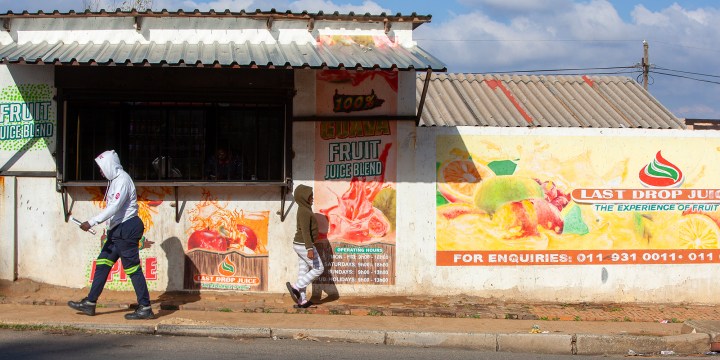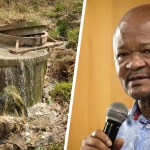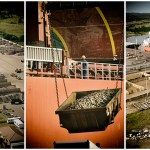BUSINESS REFLECTION
After the Bell: Checking in on the SME fund

Venture capital in SA has really struggled – there have been some success stories, but they are few and far between. The reason is rooted in the venture capital business model.
With everything that’s happening in South Africa – you know what I mean, all the stuff – it’s pretty easy to get depressed. But now and then you get to see what the country is capable of. I had one of those moments on Tuesday when I checked in on the SA SME Fund.
If you recall, the fund was set up as one of the three main activities that flowed out of something called the CEO Initiative.
The initiative was first set in motion by outgoing Nedbank CEO Mike Brown, who gathered together members of the SA delegation of the World Economic Forum at Davos in 2016 to brainstorm some practical ideas to move the country forward.
The group was responding to a call from the then Minister of Finance, Pravin Gordhan, to assist in making a positive contribution to creating sustainable economic growth.
Three ideas ultimately came out of that initiative: the work experience programme later called YES; an infrastructure investment fund; and the SA SME Fund.
In a sense, the structure formed the basis for the government-business drive during the Covid crisis and now, recently, it’s been much expanded into the CEO-pledge grouping and initiative.
But the initial three projects are still running, although they may have taken different forms. The initiative, I initially thought, with the least potential was the SME Fund. Well, I couldn’t have been more wrong.
I think in some ways we get distracted by history.
Government established a whole new department to look at small businesses, which now has around 500 employees and is best known for turning Covid relief into a failed exercise to register informal businesses.
Honestly, I have no idea what, if anything, they have achieved.
The SA SME Fund, on the other hand, has six employees, and trust me, they have achieved a lot. It just demonstrates how much real-world experience counts, not to mention having great leadership.
The fund was initiated by Discovery CEO Adrian Gore and former Bidvest CEO Brian Joffe, and, honestly, you couldn’t ask for better founders.
The group passed around the hat to SA’s largest corporations and raised about R900-million. The idea was that government was supposed to match them, but instead, some of the Public Investment Corporation sub-funds put in about R500-million.
The fund has focused on two broad arenas expected to deliver the most impact: SME debt funding and venture capital.
You might think that neither of those in SA would have much of a future. Funding SMEs is a tough game and it’s easy to get it very wrong. You might imagine banks would have this all wrapped up.
Turns out, neither is true.
One of the companies in which the fund invested is A2Pay, which provides loans of around R30,000 to existing spaza shop owners; the business enjoys an astounding 99% repayment rate following big jumps in turnover. The company also does training and provides some tools of the trade to spaza shops, and it has around 6,000 merchants on its books.
A2Pay is expanding into solar power for spazas because load shedding obviously hits the industry hard.
Myriad other businesses are providing financial support for the township economy. One interesting one, Indlu Living, finances the construction of backyard buildings designed to be rented out. Some of these buildings are extraordinary: double story, with six flats, and the repayment rate is pretty quick.
Venture capital in SA has really struggled – there have been some success stories, but they are few and far between. The reason is rooted in the venture capital business model, which is based on funding large numbers of startups with the expectation that the very few big successes will compensate for the many losses.
SA’s problem, as in many other countries, is that there are just not enough startups out there to allow that business logic to unfold.
Yet, by investing broadly in existing funds, the SME fund is finding some great ideas in the venture capital space. One was to create university technology funds. Most universities around the world have a mechanism to help them transform their academic IP into commercial enterprises. SA had none, but the fund has helped create these bodies at several universities.
“We’ve done deals now with five universities and it will continue to grow. In 15 years, it will become the story it deserves to be because our IP in South Africa is pretty impressive,” fund CEO Ketso Gordhan tells me.
There is some exciting work that’s been done with wearable technology in the health sector and biotech.
The effort is going well enough to start raising money for its second fund, which has around R700-million in its coffers so far.
Gordhan says that should grow to around R1-billion by the end of the year. The new fund will, apart from anything else, allow the fund to make even larger investments.
Gordhan says this round has been notable because, for the first time in SA, a pension fund has put money into venture capital as well as a university endowment fund. This is significant because 60% of all VC money in the US comes from pension funds, so it does suggest there is potential out there.
The SME fund did get a mention in this year’s State of the Nation speech, in which President Cyril Ramaphosa said, “Government is working in partnership with the SA SME Fund to establish a R10-billion fund to support SMME growth, with R2.5-billion from government and R7.5-billion from the private sector.”
True to form, it looks like these numbers are overestimates, but Gordhan said he is hoping government will come through with some support, even though the government’s fiscal situation is currently very constrained.
This is all very positive and enlivening, but on its own of course, it is hardly likely to shift the needle in the economy as a whole.
But Gordhan quotes one interesting statistic: in the US, one out of five jobs is with companies started in the past 25 years. Would it be that this could be SA’s future? DM

















Comments - Please login in order to comment.